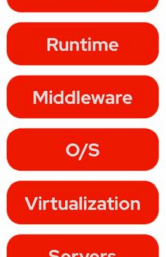The European Commission (EC) has released a report that sets the foundations of a new digital data space for the cultural heritage sector. It’s well researched, and highly ambitious. The report lays down the foundations for a revolution in digital heritage projects but also presents a long list of concerns.
“The Cloud is primarily a platform for Cultural Heritage professionals”, the report reads. “It should support professionals in sharing data, should provide digital tools enabling them to work cooperatively to facilitate the insight and discovery process, and should enable keeping trace of the discovery process.”
In other words, people working in the heritage sector would use this data space and its possibilities to work and research cultural heritage together with others. It wouldn’t just be a database, but an active platform – similar to Microsoft’s Office 365 suite, but with the European collaborative aspect of Europeana. Tools, databasing, and communication would all be managed in a single, vast data space, ready to be utilised by anyone working on European heritage.
Enter the data space

The scale of the proposed Cloud is difficult to comprehend – it’s simply not been done before for cultural heritage. The report lists many other similar projects for inspiration and comparison, but the key message is that other similar cultural heritage databases and digital platforms lack in some areas or another.
What the report suggests is that this Cloud would:
- Have hardware for computing and calculations
- Be collaborative
- Have long term storage for data
- Allow access to that data
- Enable interaction with that data
In short, for people working in heritage across Europe, the Collaborative Cloud would be the main space for any digital endeavours. It would be a digital workspace where researchers and professionals seamlessly work with each other. Not only would people be able to upload and store data on the Collaborative Cloud, but they could process it too.
Currently, the report suggests that the Cloud will run under the “Software as a Service model (SaaH). Technically, this means that a provider will run the infrastructure on cloud servers, and users will pay for the access. This is in contrast to other software models which require higher levels of technical skill to engage with. It is envisaged that a lay user (e.g. a museum employee) would be able to access and use the Cloud with just a web browser and minimal training.
Proposed uses
It is proposed that the data space will have some concrete tools to navigate and use stored data. Instead of only searching for raw data, professionals need to have access to digital instruments to actually do something with it. The report shows a whole list of things needed to start working with the data and some interesting purposes for which it can be used.
First of all, to access and interpret the data, an accessible infrastructure to add, navigate and create metadata is needed. The enriched metadata could then also be shared with other databases. Other ideas the data could be used for according to the report are creating new approaches for 2D/3D digitalization, AI-based methods for automatic data analysis and research, and tools for museums and heritage sites and their exhibitions and digital cloning.
The central theme is to make digital work easier for the sector while encouraging collaborations. This is an interesting and ambitious idea, but it’s difficult to see how such a project would ever take shape.
Plenty of uncertainties
Since it is only the first step toward a possible project in the future, the concept is alluring. Imagine, that all kinds of heritage sites, professionals and museums have unconditional access to add and create within the Collaborative Cloud. Nonetheless, there are plenty of doubts and uncertainties.
Who pays for maintenance and extensions of the European Collaborative Cloud for Cultural Heritage?
The report itself rightfully states if such a big project will become reality, who will be responsible for creating policy and an organizational model. Or perhaps even more important, what should be the business model: “who pays for maintenance and extensions of the European Collaborative Cloud for Cultural Heritage?”
Technical issues are also an overwhelming concern, as noted by the report. Metadata is a constant concern for databases in the heritage field. Data security would have to be ongoing and carefully managed, especially if the platform is as open-source as the report suggests. On a very technical level, it is difficult to transfer complex data (such as 3D digital representations of heritage objects) in a way which doesn’t lose fidelity or isn’t highly inefficient.
There are suggested solutions, such as using machine learning and AI to automatically manage metadata across multiple languages, but it’s clear that these are still early days for such an ambitious project. The report gives a subtle indication that the solutions for these issues will exist in the future as digital infrastructure advances, but it’s clear that there’s a long way to go yet.
Whilst it is good to see that the report takes clear stock of the heritage community’s needs and concerns, it’s difficult to see how the project will proceed when there are already so many potential issues.
No clear road
The main task of this report was to lay down the foundations for upcoming projects, and it succeeds. The report itself is a good summary of all intersections between digital and heritage, and a reminder that there are already many digital tools and databases available for heritage professionals. However, there’s a significant amount of work to be done before the Collaborative Cloud becomes something useful and tangible, even though there is potential to be uncovered.
For now though, the Cloud remains wrapped in fog. Let’s hope it won’t dissolve into thin air.
The report can be accessed in full at the Publications Office of the EU.

